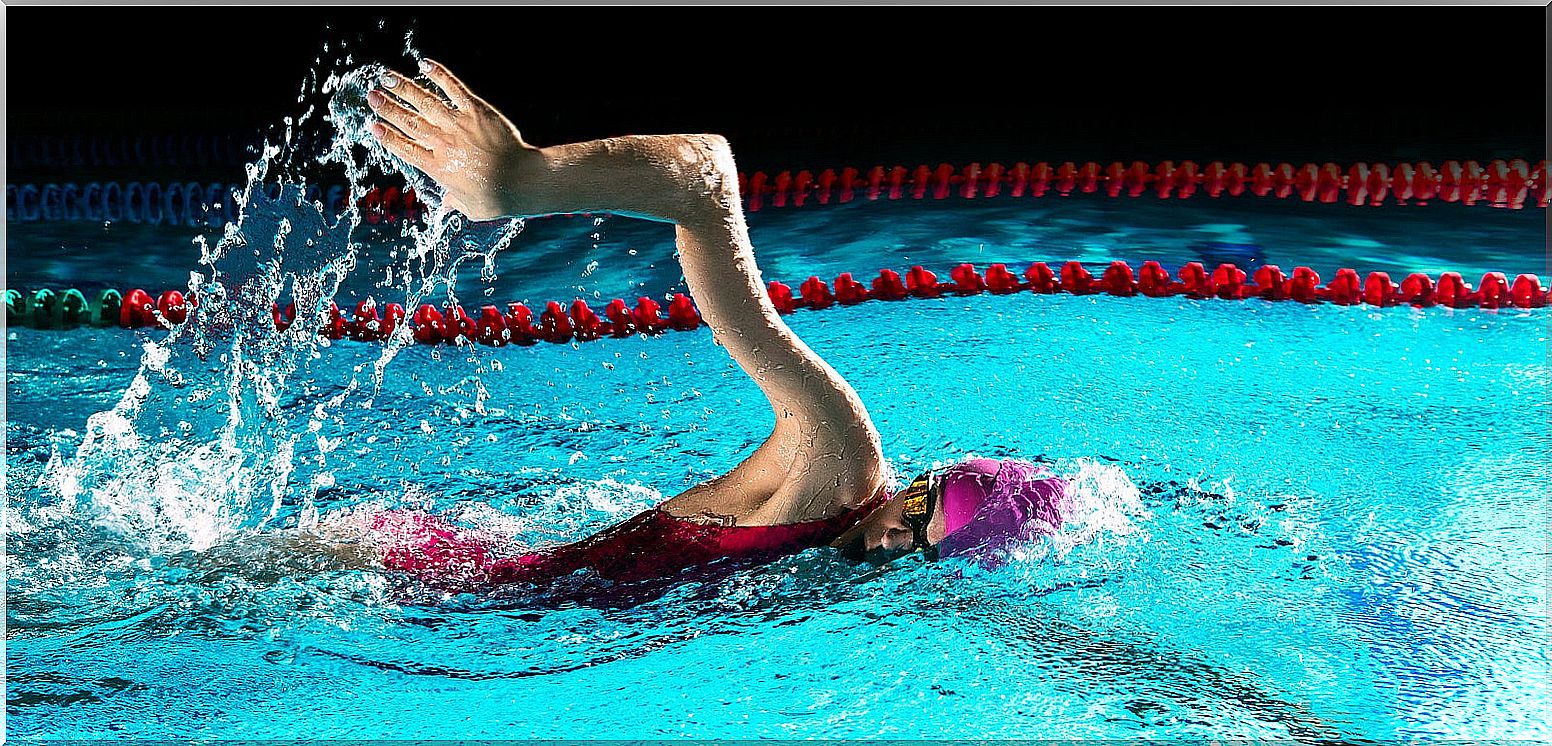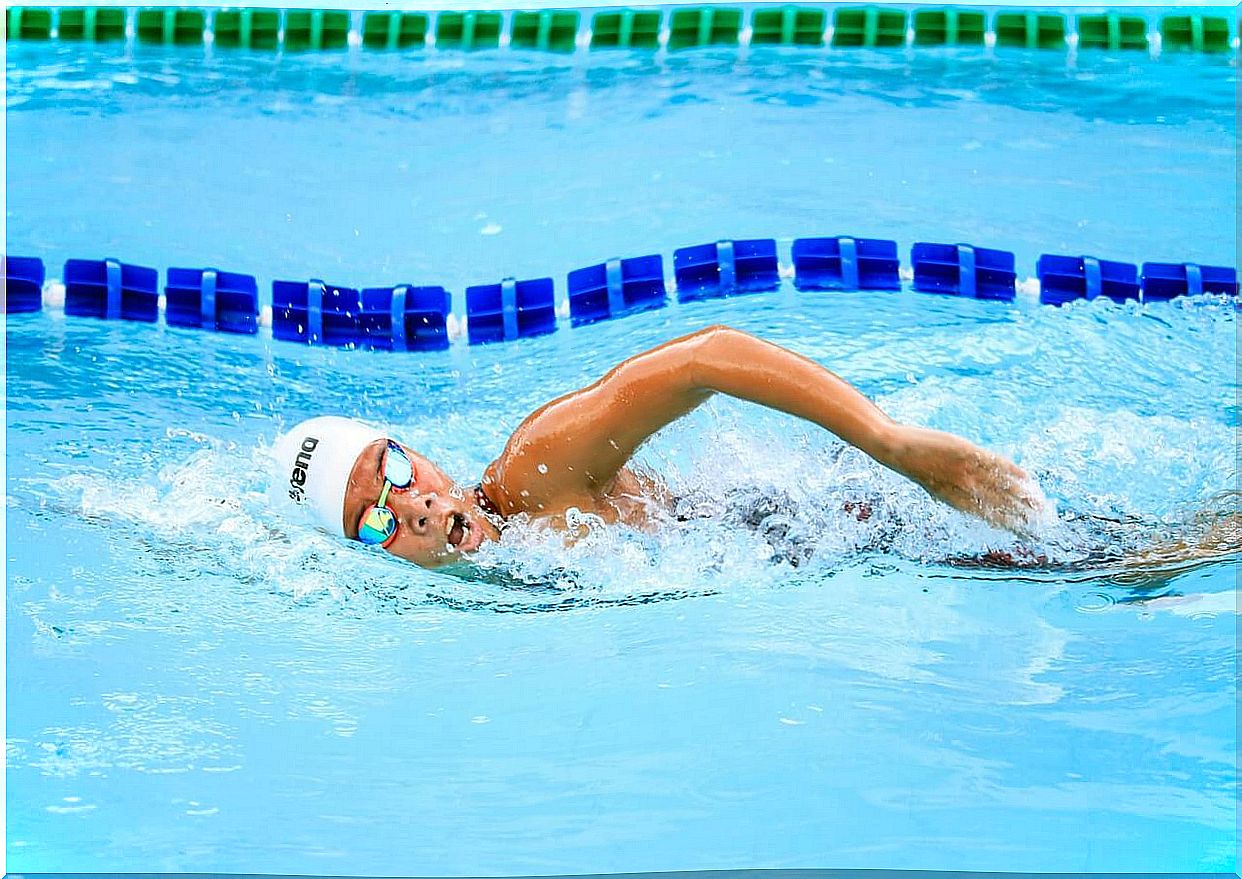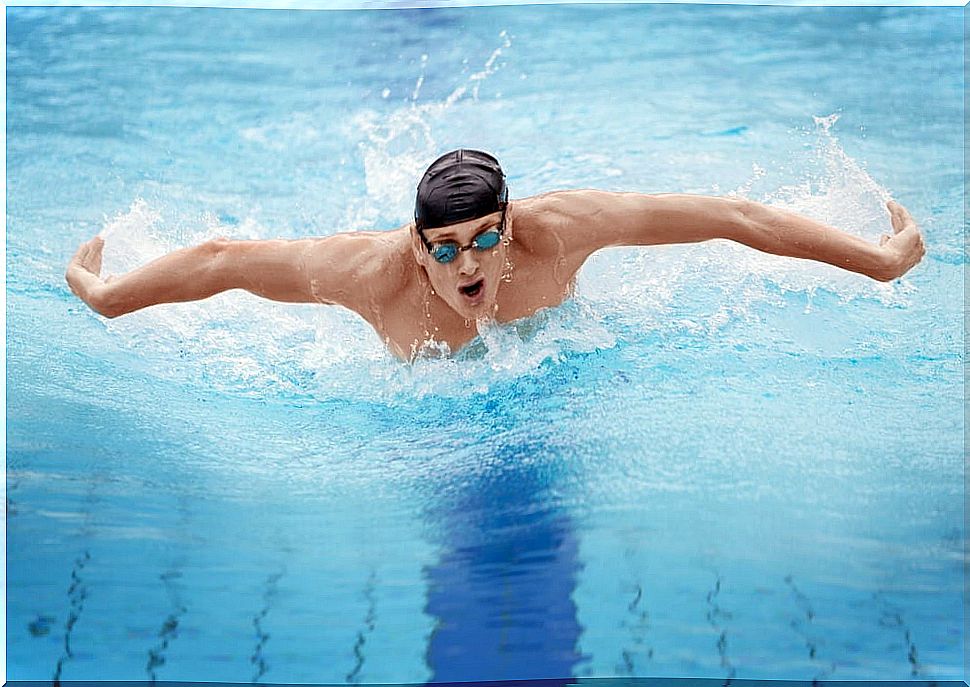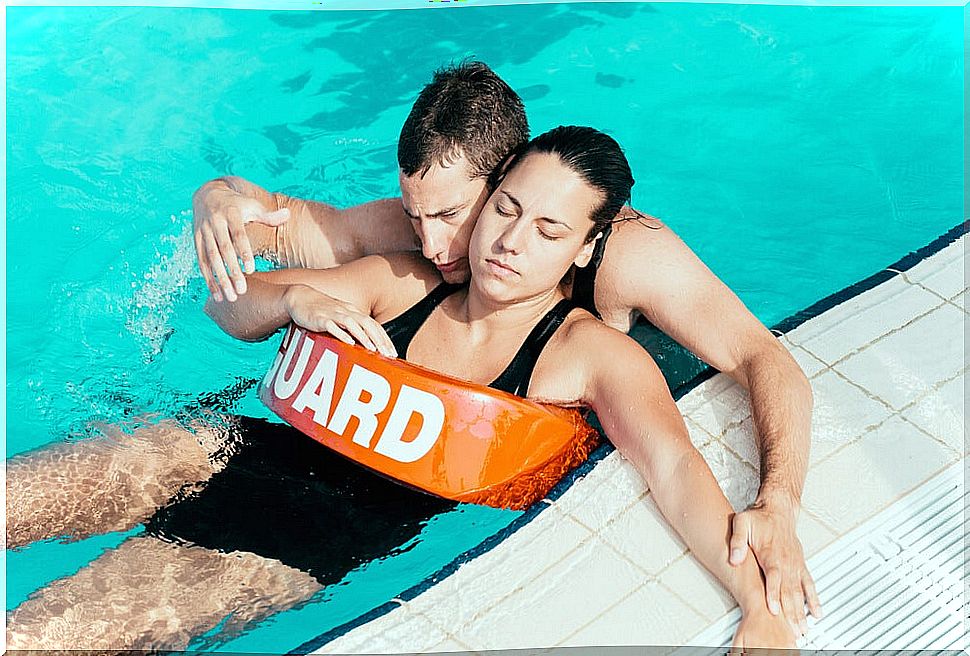How To Breathe Correctly When Swimming
Learning to breathe well when swimming helps you achieve better performance. We propose you to know other of its benefits and some techniques to optimize this movement.

Maintaining correct breathing when swimming is one of the keys to improving performance and preventing that uncomfortable feeling of fatigue in the water. Although good breathing coordination is a bit tedious at first, it can be mastered with practice.
The problem is that not all athletes spend time on breathing techniques and overlook those mistakes that accelerate fatigue. In addition, some get used to containing the air for long stretches, ignoring the fact that such action is not beneficial due to the lack of oxygen it causes.
Fortunately, the tips for proper breathing when swimming are nothing to write home about. Are you interested in learning them?
Tips for maintaining correct breathing when swimming
When it comes to swimming, it is important to have your lungs well prepared. The technique for correct breathing when swimming can vary depending on the type of swim.
In general, the objective of mastering it is to optimize the performance of the exercises, since smooth and relaxed breathing saves valuable energy.
Bilateral crawl breathing

The key to correct breathing when swimming in the front crawl is to do it bilaterally. This technique requires the swimmer to change their breathing side after each complete stroke cycle.
According to a study published by the Norwegian School of Sport Sciences , in short races (50 meters) swimmers should breathe as little as possible to boost their swimming speed. Meanwhile, in races of 100 meters or more, their alternation can occur every three or five strokes.
The benefits of the bilateral breathing technique include:
- Decrease the tension on the shoulder area.
- Improves balance and body alignment.
- Contributes to greater energy savings.
- Improves locating ability and helps control vision on both sides.
Front breath for butterfly style
In the butterfly style, it is easier to breathe. To do it correctly, the swimmer must breathe forward, keeping his head as high as possible. That is, it takes in air when it takes its head out and expels it when it goes back into the water.

One of the variants that is currently being used is to breathe every two arm cycles. This is called the “2 and 1 breath rate” and is used for best performance.
Precisely, investigations such as one carried out by experts from the University of Edinburgh detail that breathing can – albeit slightly – restrict the coordination of movements in this style. Therefore, it is detailed that it is a “limitation” that coaches must monitor.
Breathing in the back style
Many feel comfortable when swimming in the backstroke, since breathing is much easier than in the other modalities. However, it is not advisable to be confident, as the swimmer may lose control of the posture and swallow water.
So that there is no problem, it is essential to watch the rhythms and coordination, trying to breathe in before the arm crosses the vertical of the head. A common mistake is to take in and release air continuously, without considering the body’s own movement when swimming.
Reverse breathing
In swimming, breathing is done the other way around. This means that the air is taken in through the mouth and expelled through the nose. This advice is essential to have correct breathing when swimming, as it helps it to be more efficient.
The expulsion of air through the nose allows a more controlled breathing, since not all the oxygen is released at once. Therefore, it stays longer in the lungs and prevents that feeling of suffocation.
Consequences of bad breath when swimming

Not executing a correct breath when swimming produces several negative consequences. Although they are sometimes not perceived in the learning process, over time they become an obstacle to achieving optimal performance. The most commons are:
- Greater resistance to movement because the hips and feet tend to dive more than they should.
- Feeling of fatigue, as the need to make unnecessary movements increases.
- General lack of oxygen throughout the body, increasing premature tiredness according to a study published by The Journal of Strength and Conditioning Research .
- Dizziness, when there is a breath in each stroke.
- Choking sensation when holding your breath for a long time.
- Exhaustion and muscular tension due to overexertion.
Learning how to breathe correctly when swimming is essential
Are you worried about having bad breath when swimming? Take into account the recommendations given for each case, but assume them naturally. From now on, do your normal swimming exercises, but focusing on having better breathing.
With these simple keys, you will make the technique more and more spontaneous and, in addition, you will improve your performance. If you have doubts or feel that you are doing it wrong, ask for the supervision of a coach to polish the details that stall your progress.









